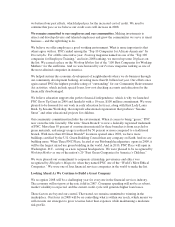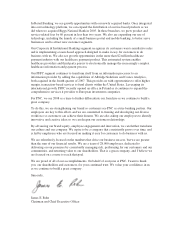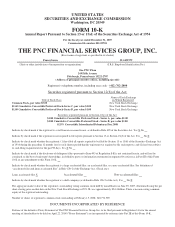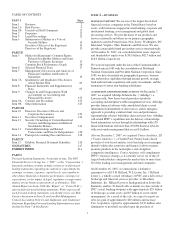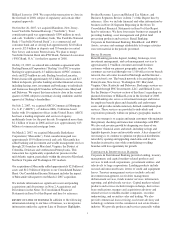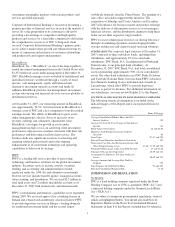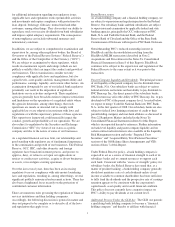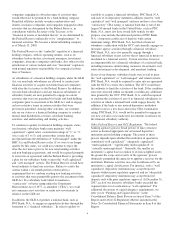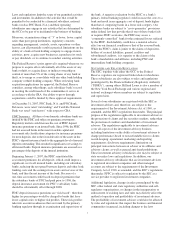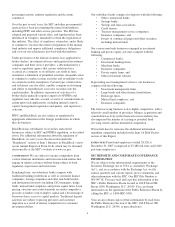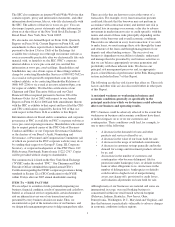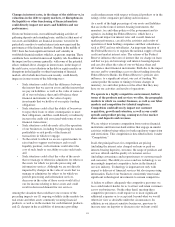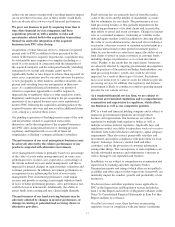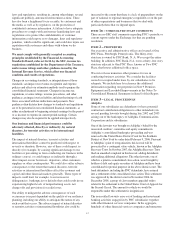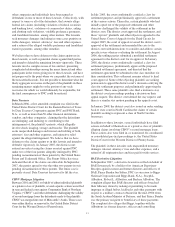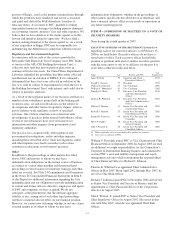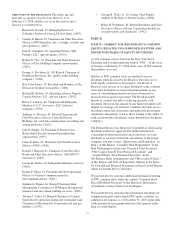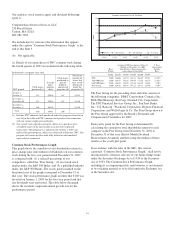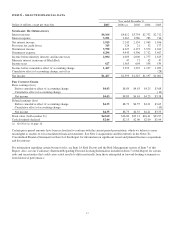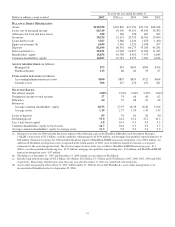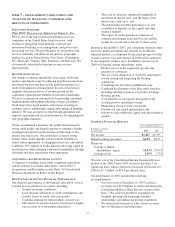PNC Bank 2007 Annual Report Download - page 14
Download and view the complete annual report
Please find page 14 of the 2007 PNC Bank annual report below. You can navigate through the pages in the report by either clicking on the pages listed below, or by using the keyword search tool below to find specific information within the annual report.The SEC also maintains an internet World Wide Web site that
contains reports, proxy and information statements, and other
information about issuers, like us, who file electronically with
the SEC. The address of that site is www.sec.gov. You can
also inspect reports, proxy statements and other information
about us at the offices of the New York Stock Exchange, 20
Broad Street, New York, New York 10005.
We also make our Annual Report on Form 10-K, Quarterly
Reports on Form 10-Q, Current Reports on Form 8-K, and
amendments to those reports filed or furnished to the SEC
pursuant to Section 13(a) or 15(d) of the Exchange Act
available free of charge on or through our internet website as
soon as reasonably practicable after we electronically file such
material with, or furnish it to, the SEC. PNC’s corporate
internet address is www.pnc.com and you can find this
information at www.pnc.com/secfilings. Shareholders and
bondholders may also obtain copies of these filings without
charge by contacting Shareholder Services at 800-982-7652 or
via e-mail at [email protected] for copies
without exhibits, or by contacting Shareholder Relations at
(800) 843-2206 or via e-mail at [email protected]
for copies of exhibits. We filed the certifications of our
Chairman and Chief Executive Officer and our Chief
Financial Officer required pursuant to Section 302 of the
Sarbanes-Oxley Act of 2002 with respect to our Annual
Report on Form 10-K for 2006 and both amendments thereto
with the SEC as exhibits to that report and have filed the CEO
and CFO certifications required by Section 302 of that Act
with respect to this Form 10-K as exhibits to this Report.
Information about our Board and its committees and corporate
governance at PNC is available on PNC’s corporate website at
www.pnc.com/corporategovernance. Shareholders who would
like to request printed copies of the PNC Code of Business
Conduct and Ethics or our Corporate Governance Guidelines
or the charters of our Board’s Audit, Nominating and
Governance, or Personnel and Compensation Committees (all
of which are posted on the PNC corporate website) may do so
by sending their requests to George P. Long, III, Corporate
Secretary, at corporate headquarters at One PNC Plaza, 249
Fifth Avenue, Pittsburgh, Pennsylvania 15222-2707. Copies
will be provided without charge to shareholders.
Our common stock is listed on the New York Stock Exchange
(“NYSE”) under the symbol “PNC.” Our Chairman and Chief
Executive Officer submitted the required annual CEO’s
Certification regarding the NYSE’s corporate governance listing
standards (a Section 12(a) CEO Certification) to the NYSE
within 30 days after our 2007 annual shareholders meeting.
ITEM
1
A
–
RISK FACTORS
We are subject to a number of risks potentially impacting our
business, financial condition, results of operations and cash flows.
Indeed, as a financial services organization, certain elements of
risk are inherent in every one of our transactions and are
presented by every business decision we make. Thus, we
encounter risk as part of the normal course of our business, and
we design risk management processes to help manage these risks.
There are risks that are known to exist at the outset of a
transaction. For example, every loan transaction presents
credit risk (the risk that the borrower may not perform in
accordance with contractual terms) and interest rate risk (a
potential loss in earnings or economic value due to adverse
movement in market interest rates or credit spreads), with the
nature and extent of these risks principally depending on the
identity of the borrower and overall economic conditions.
These risks are inherent in every loan transaction; if we wish
to make loans, we must manage these risks through the terms
and structure of the loans and through management of our
deposits and other funding sources. The success of our
business is dependent on our ability to identify, understand
and manage the risks presented by our business activities so
that we can balance appropriately revenue generation and
profitability with these inherent risks. We discuss our
principal risk management processes and, in appropriate
places, related historical performance in the Risk Management
section included in Item 7 of this Report.
The following are the key risk factors that affect us. These risk
factors and other risks are also discussed further in other parts
of this Report.
A sustained weakness or weakening in business and
economic conditions generally or specifically in the
principal markets in which we do business could adversely
affect our business and operating results.
PNC’s business could be adversely affected to the extent that
weaknesses in business and economic conditions have direct
or indirect impacts on us or on our customers and
counterparties. These conditions could lead, for example, to
one or more of the following:
• A decrease in the demand for loans and other
products and services offered by us;
• A decrease in the value of our loans held for sale;
• A decrease in the usage of unfunded commitments;
• A decrease in customer savings generally and in the
demand for savings and investment products offered
by us; and
• An increase in the number of customers and
counterparties who become delinquent, file for
protection under bankruptcy laws, or default on their
loans or other obligations to us. An increase in the
number of delinquencies, bankruptcies or defaults
could result in a higher level of nonperforming
assets, net charge-offs, provision for credit losses,
and valuation adjustments on loans held for sale.
Although many of our businesses are national and some are
international in scope, our retail banking business is
concentrated within our retail branch network footprint
(Delaware, Indiana, Kentucky, New Jersey, Ohio,
Pennsylvania, Washington, D.C., Maryland and Virginia), and
thus that business is particularly vulnerable to adverse changes
in economic conditions in these regions.
9


